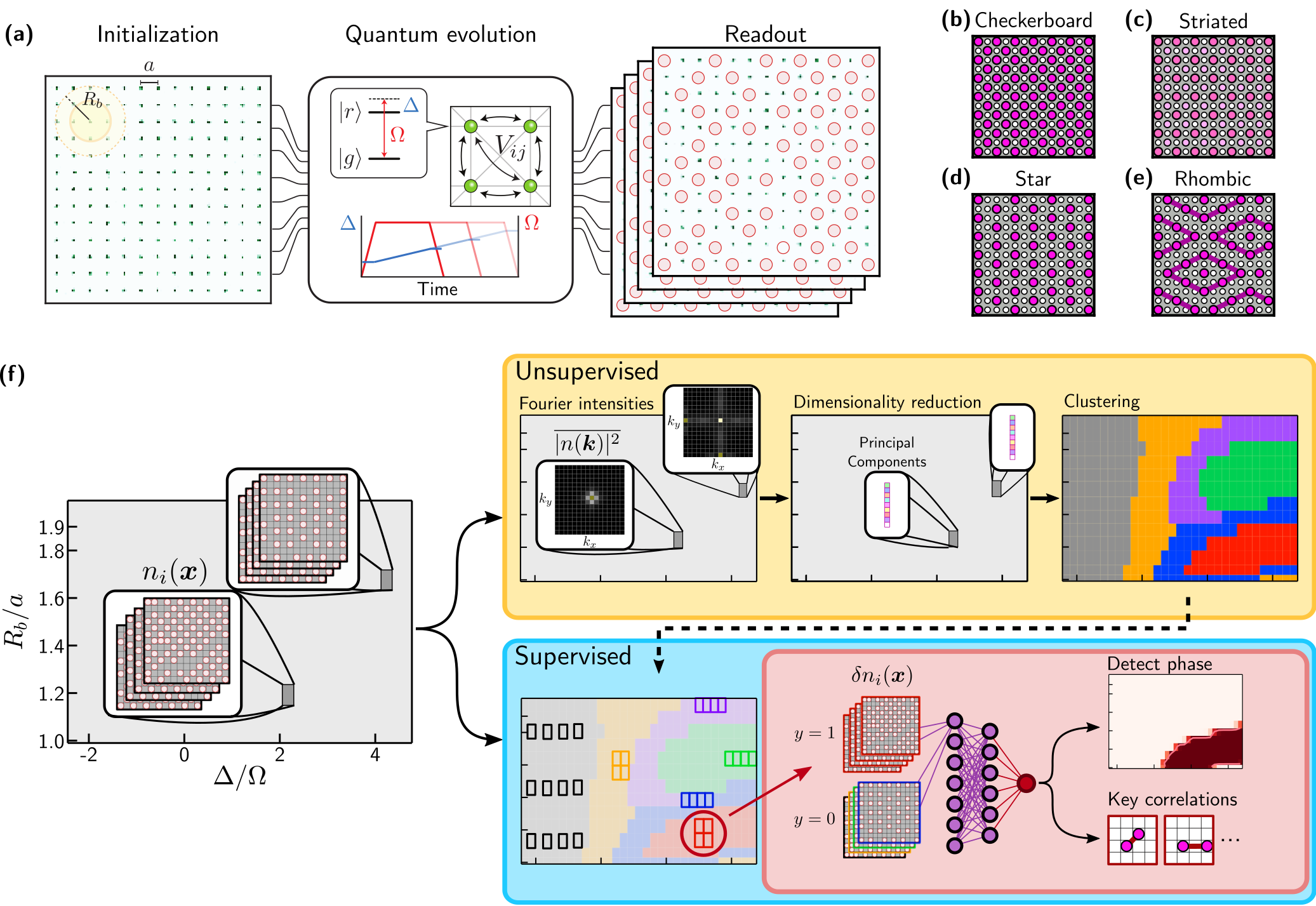Machine learning discovery of new phases in programmable quantum simulator snapshots
Machine learning has recently emerged as a promising approach for studying complex phenomena characterized by rich datasets. In particular, data-centric approaches lend to the possibility of automatically discovering structures in experimental datasets that manual inspection may miss. Here, we introduce an interpretable unsupervised-supervised hybrid machine learning approach, the hybrid-correlation convolutional neural network (Hybrid-CCNN), and apply it to experimental data generated using a programmable quantum simulator based on Rydberg atom arrays. Specifically, we apply Hybrid-CCNN to analyze new quantum phases on square lattices with programmable interactions. The initial unsupervised dimensionality reduction and clustering stage first reveals five distinct quantum phase regions. In a second supervised stage, we refine these phase boundaries and characterize each phase by training fully interpretable CCNNs and extracting the relevant correlations for each phase. The characteristic spatial weightings and snippets of correlations specifically recognized in each phase capture quantum fluctuations in the striated phase and identify two previously undetected phases, the rhombic and boundary-ordered phases. These observations demonstrate that a combination of programmable quantum simulators with machine learning can be used as a powerful tool for detailed exploration of correlated quantum states of matter.
PDF Abstract


